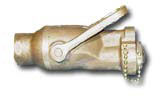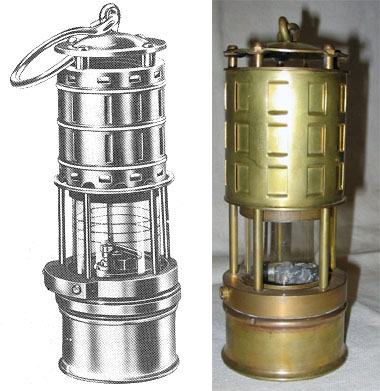 |
 |
 |
 |
| HOME |
| ABOUT US |
| PARTICIPATE |
| COLLECTIONS |
| DC EQUIPMENT MUSEUM |
| SHIP&SUBMARINE MUSEUM |
| WW II DAMAMGE REPORTS |
| SHIPBOARD CASUALTIES |
| DAMAGE CONTROL MUSEUM |
| DC EQUIPMENT Museum |
| Shoring, Pipe Patching, and Plugging |
| Folding Plate Patch |
| The prefabricated folding plate patch was generally not
larger than 18 inches in diameter and made from 3/16- or ¼-inch
steel plate. The outboard side had two steel hinges that were
welded on to connect the plates together and allow them to fold
in order to pass through a 9- to 12-inch opening. A soft rubber
gasket was glued to the peripheral of the inner surface, or a
large 18 ½ inch in diameter rubber sheet gasket was placed on
the inboard side of the plate patch, using an eyelet to provide
a tighter fit, with a hole in the center. The center of the
plates had a 9/16-inch hole drilled in order to pass a ½-inch
line through with a knot tied on the bitter end. To install a folding plate patch from the interior, Sailors inserted a ½-inch by 25-foot-long line on each side through the plate, tying a knot as described above. If the compartment was not completely flooded, they positioned themselves inside the hole and inserted the folding plate through the hole. They pulled the line from the inside, tightening it through the hole opening and attaching it around a stanchion. They formed a make up by running the bitter end in and tying it off with a clove hitch. They then inserted a short pipe such as a dogging wrench or a stick from a cot between the lines to make the turns for a Spanish windlass; this took in the slack and created tension on the folding plate patch line until it was securely in place. If the compartment was completely flooded, a Sailor, outfitted with a shallow water diving apparatus and accompanied by a safety line tender, went inside the compartment through a hatch or scuttle. Diving down using a hook, he received the line with the patch, inserted the plate patch and secured the line to a stanchion or foundation anchor of some sort. Using these procedures, personnel patched areas where rates of flooding were the highest first. In some cases where a compartment had been flooded, they patched the holes and then dewatered the compartment with portable pumps. Reports of repairs were made to the on scene leader when the hole was under repair, when the repairs were completed and when the compartment was dewatered |
| For more information, see the Index. |